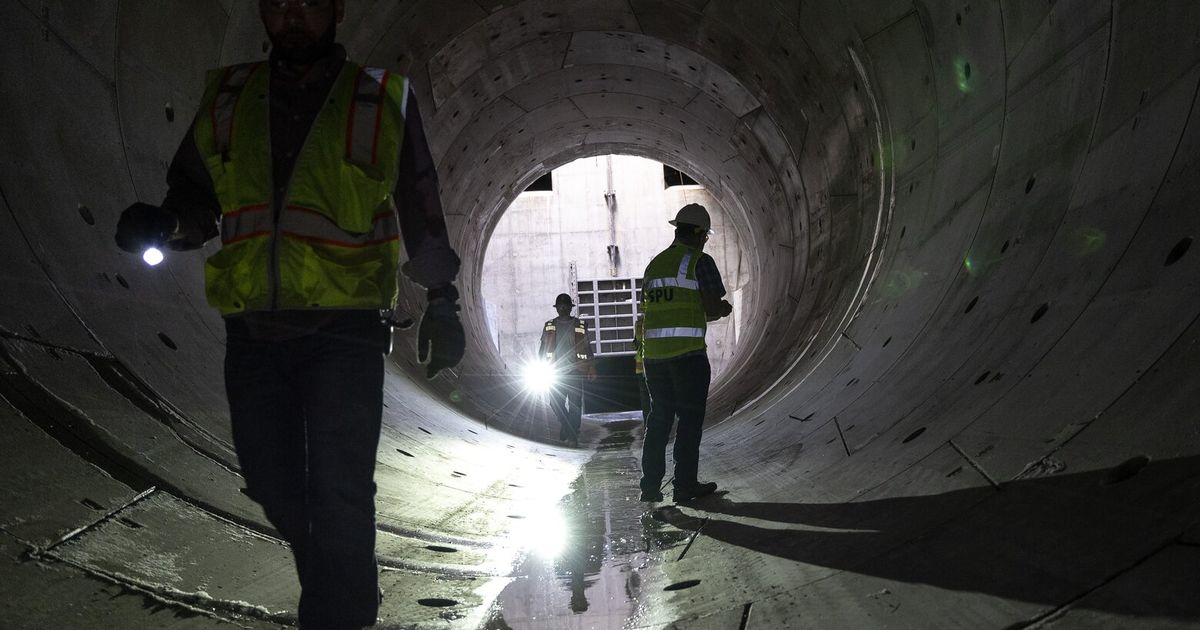Building a pump station for Seattle’s massive new sewage and stormwater storage tunnel will suck up more money than expected and contribute to higher utility rates for residents in the coming years, officials say. The Ballard pump station’s new price tag of nearly $190 million isn’t the main reason why Seattle Public Utilities needs to raise the city’s water, sewage, solid waste and drainage rates by 4.7% per year through 2030, officials told City Council members during a council committee meeting Wednesday .
But it’s a prominent example of the challenges currently squeezing the agency, which is under pressure to upgrade aging systems at a time when construction, borrowing and other costs have climbed. Not yet operational, the tunnel that the pump station will serve runs 2.7 miles from Wallingford to Ballard, project executive Keith Ward said during a recent tour of the subterranean tube, pointing into the echoing darkness.

Pending approval by the council, a new multiyear business plan proposed by Public Utilities would set rates on a path to $325 per month for a typical house and $187 for a typical apartment by 2030, up from $245 for a house and $142 for an apartment today. Seattle City Light provides electricity separately. Although Public Utilities and City Light are part of Seattle government, they’re mostly funded by ratepayers, rather than by the city’s deficit-plagued general fund.
Public Utilities develops a new business plan every few years, and the Cit.























